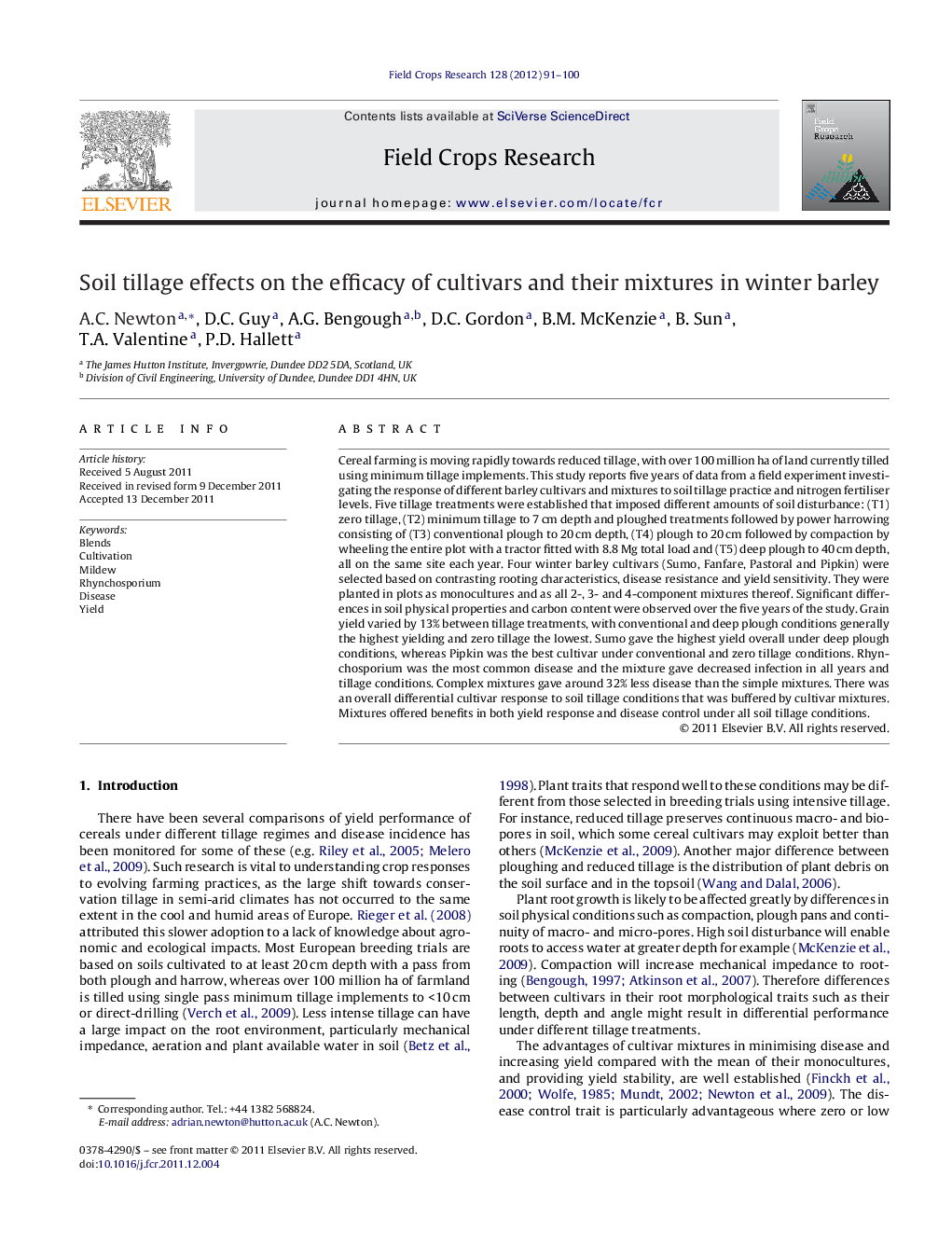| Article ID | Journal | Published Year | Pages | File Type |
|---|---|---|---|---|
| 4510659 | Field Crops Research | 2012 | 10 Pages |
Cereal farming is moving rapidly towards reduced tillage, with over 100 million ha of land currently tilled using minimum tillage implements. This study reports five years of data from a field experiment investigating the response of different barley cultivars and mixtures to soil tillage practice and nitrogen fertiliser levels. Five tillage treatments were established that imposed different amounts of soil disturbance: (T1) zero tillage, (T2) minimum tillage to 7 cm depth and ploughed treatments followed by power harrowing consisting of (T3) conventional plough to 20 cm depth, (T4) plough to 20 cm followed by compaction by wheeling the entire plot with a tractor fitted with 8.8 Mg total load and (T5) deep plough to 40 cm depth, all on the same site each year. Four winter barley cultivars (Sumo, Fanfare, Pastoral and Pipkin) were selected based on contrasting rooting characteristics, disease resistance and yield sensitivity. They were planted in plots as monocultures and as all 2-, 3- and 4-component mixtures thereof. Significant differences in soil physical properties and carbon content were observed over the five years of the study. Grain yield varied by 13% between tillage treatments, with conventional and deep plough conditions generally the highest yielding and zero tillage the lowest. Sumo gave the highest yield overall under deep plough conditions, whereas Pipkin was the best cultivar under conventional and zero tillage conditions. Rhynchosporium was the most common disease and the mixture gave decreased infection in all years and tillage conditions. Complex mixtures gave around 32% less disease than the simple mixtures. There was an overall differential cultivar response to soil tillage conditions that was buffered by cultivar mixtures. Mixtures offered benefits in both yield response and disease control under all soil tillage conditions.
► Five tillage treatments with different amounts of soil disturbance gave interactions for yield response with some barley cultivars. ► Mixtures of the cultivars enhanced yield and reduced disease similarly on all soil disturbance treatments. ► Grain yield varied by 13% between tillage treatments, with conventional and deep plough conditions generally the highest yielding and zero tillage the lowest. ► Complex mixtures gave around a third less disease than the simple mixtures. ► There was an overall differential cultivar response to soil tillage conditions that was buffered by cultivar mixtures.
